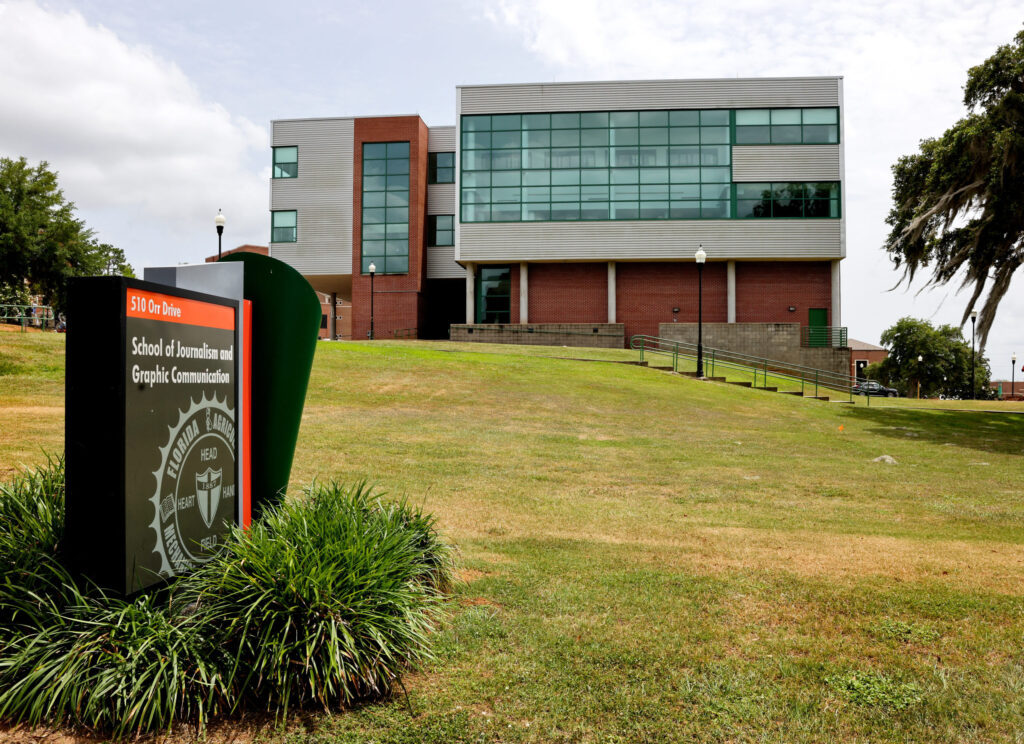
Florida A&M University’s School of Journalism and Graphic Communication holds the No. 1 ranking for HBCU public relations programs, according to BestColleges.
However, the quality of this curriculum raises questions. With only 64 students in the program, we must evaluate whether the curriculum itself justifies this top-ranking status.
The Fall 2022 curriculum guide on sjgc.famu.edu outlines the program’s requirements. By the end of their sophomore year, public relations students complete three credit hours specific to their major.
Upon graduating, students would have completed a total of 14 public relations (PR) credit hours. This includes Introduction to PR, Social Media and Data Analytics, PR Research and Strategies, Integrated Marketing Communication and PR Agency.
Have we been disadvantaged with only five major-specific courses, four of which are not introduced until the second half of our college career?
I interviewed three public relations students to learn more about their opinions and experiences with the curriculum. Their opinions were similar to my own.
Gregory Washington is a junior public relations major. He entered FAMU in the summer of 2021 and has since taken one public relations course.
Despite gaining valuable experience through an internship with Warner Music Group, Washington expressed his desire for a more focused curriculum.
“I feel like the PR curriculum is very versatile, which I’m sure is beneficial, but it constantly feels like I’m learning how to do someone else’s job. I love that I’m gaining an understanding of the world of journalism and so forth, I just wish the curriculum was, at its core, more public relations focused,” Washington said.
SJGC’s public relations curriculum consists of 120 credit hours, with only 12% dedicated to PR, 13% to journalism, television and radio, 4% to graphic design, and 15% to mass media communication.
Unlike the broadcast journalism curriculum, public relations lacks elective courses. This was a significant concern for graduating senior Widnise Vilna.
“Fourteen is just one semester’s worth of PR classes … I know our public relations curriculum is changing and courses are being added but there should be electives that’ll be beneficial to future public relations practitioners like media communication, crisis management, pitching, creating social media kits and social media campaigns,” Wilna said.
Nadia Wilson is a Spring 2022 graduate working in the entertainment sector. She emphasized the value of internships and the student-run PR agency in her development.
“I learned more throughout my internships as opposed to within classes as far as the hands-on day-to-day work that a publicist does … A lot of the courses weren’t as demanding as the actual work in the industry. I do feel as though some courses did prepare me but most of my learnings came from my experiences. However, I learned how to create campaign books, PR plans, and strategies and I got a chance to have my own client in the PR Agency course,” Wilson said.
As in any career field, nothing compares to hands-on experience. I met with Deborah Thigpen, the assistant visiting professor over our student
run public relations agency. As a veteran in the field, Thigpen highlighted that hands-on experience is key.
“Courses are never enough, you have to do stuff outside. Book knowledge is one thing, but hands-on experience is going to get you in the door,” she said.
Regardless of opinion, there is a clear division within the structure of our curriculum compared to others. Where graphic design students have 53 major specific credit hours and broadcast journalism students have a combined 33 between journalism, radio and television, public relations students have fallen short at 14.
Despite the exceptional talents within SJGC’s public relations program, the curriculum appears to lag in delivering specialized knowledge. While SJGC remains the top-ranked PR program due to its resources and network, the organization of its curriculum can be seen as a disadvantage to students that needs to be addressed.